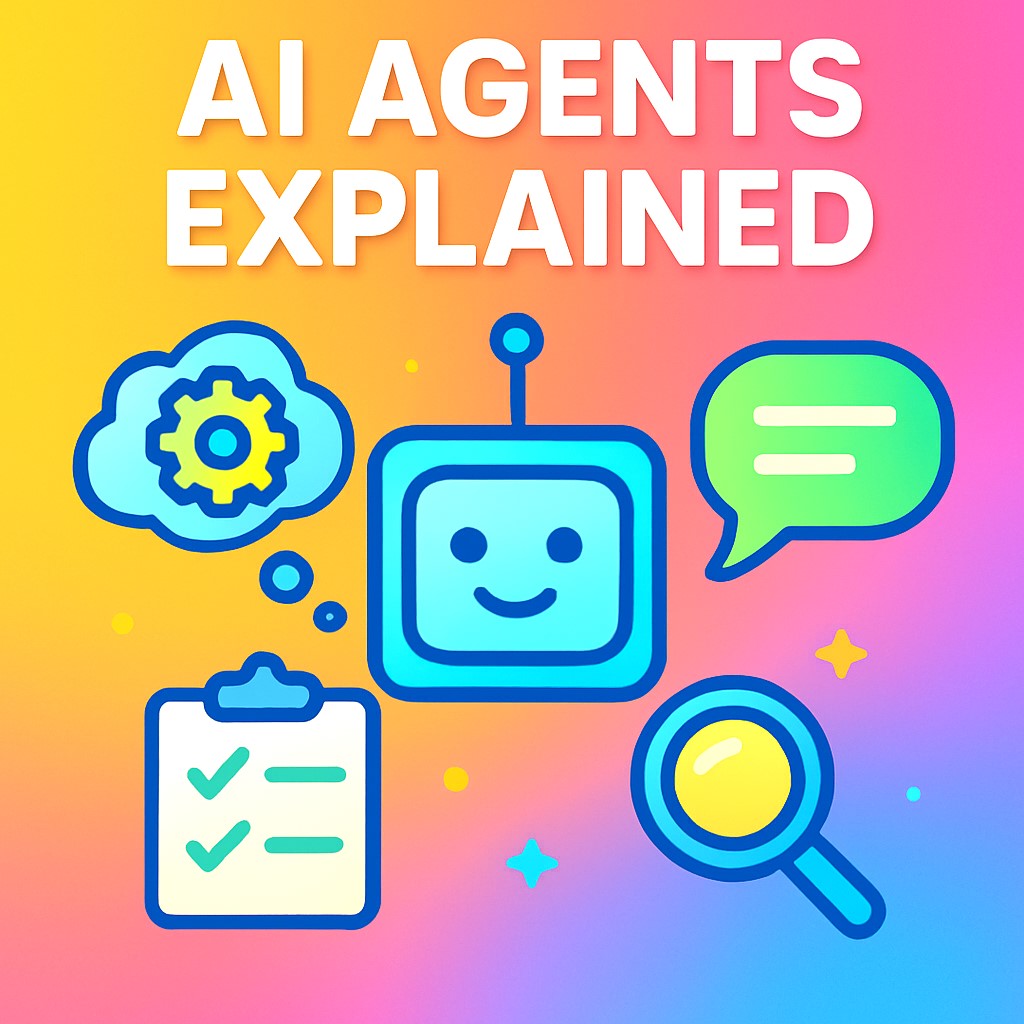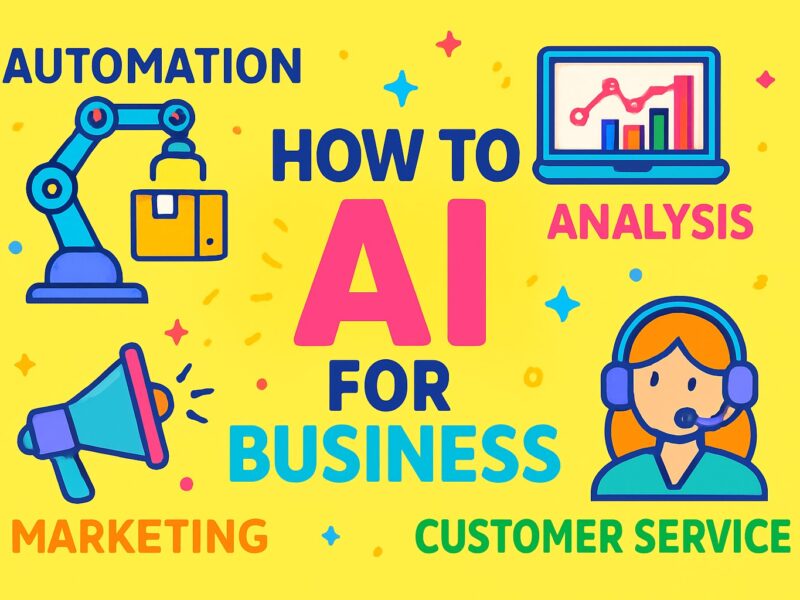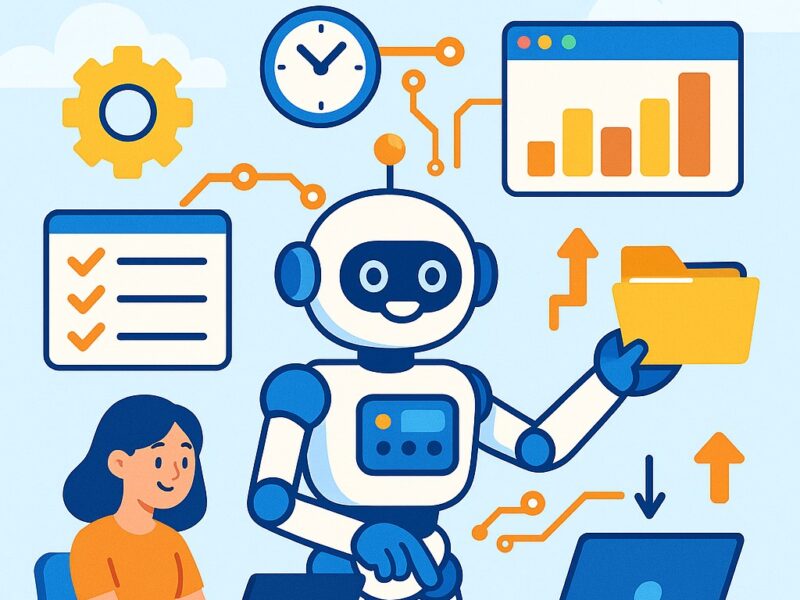AI Agents Explained

Artificial Intelligence (AI) agents are transforming the way businesses, researchers, and everyday users interact with digital systems. Whether it’s automating tasks, analyzing data, or even holding conversations, AI agents are the brains behind the actions. In this article, we’ll dive deep into what AI agents are, how they work, their types, applications, and the future they’re shaping. If you’re searching for a clear and complete breakdown of “AI Agents Explained,” you’re in the right place.
What Are AI Agents?
At the simplest level, it is a software entity that can perceive its environment, make decisions, and take actions to achieve specific goals. These agents rely on data and algorithms to behave intelligently. They can operate autonomously, semi-autonomously, or under human direction.
The concept of an agent comes from computer science and is central to AI design. An agent is anything that can sense its environment and act upon it. When paired with artificial intelligence, these agents become more capable — learning from experience, adapting to new situations, and even predicting outcomes.
How Do They Work?
AI agents follow a sense-think-act cycle:
-
Sensing – The agent receives input from its environment using sensors or data feeds.
-
Thinking – It processes this data using algorithms such as rule-based systems, machine learning models, or neural networks.
-
Acting – It executes an action based on its analysis to influence the environment or achieve its objective.
The brain of the agent includes various components like decision-making logic, memory, and sometimes a learning module. Some advanced agents also include natural language processing, planning capabilities, and real-time reasoning.
Core Components of an AI Agent
To better understand how AI agents function, let’s look at the major components that make them tick:
-
Perception Module: This interprets the incoming data. It could be visual input, textual data, sensor readings, or any other form of environmental signal.
-
Decision Engine: This is the heart of the AI agent. It analyzes the data and decides the next course of action.
-
Actuators or Output Mechanism: These are the tools or processes through which the agent interacts with the environment, such as sending messages, moving objects, or updating systems.
-
Learning Module: Some agents have a learning system that helps them improve performance over time based on feedback and results.
Types of AI Agents
There are several categories of AI agents based on complexity and capabilities:
1. Simple Reflex Agents
These agents operate based on a set of predefined rules. When they detect a condition, they trigger a corresponding response. They don’t store past actions or learn from the environment. Example: a thermostat maintaining room temperature.
2. Model-Based Reflex Agents
These agents maintain an internal state of the world. They don’t just react; they also understand the context of their environment. This makes them more adaptable than simple reflex agents.
3. Goal-Based Agents
Goal-based agents consider the future consequences of their actions. They don’t just react to the present but make plans to achieve a desired goal. They evaluate which actions will move them closer to that goal.
4. Utility-Based Agents
These agents prioritize decisions based on utility — essentially how good or valuable a specific outcome is. They calculate and compare possible results to choose the most beneficial one.
5. Learning Agents
These are advanced agents that continuously improve by learning from data and experiences. They may include machine learning or deep learning components. Over time, they evolve to become better at their assigned tasks.
Real-World Applications of AI Agents
AI agents are being used in a wide range of industries and sectors. Here are some common examples:
Customer Support
AI agents are commonly used in automated customer service. These virtual assistants or chatbots handle inquiries, resolve common problems, and even escalate complex issues to human agents when necessary.
Healthcare
AI agents assist in diagnosing diseases, recommending treatments, and managing patient records. They also support predictive analytics to anticipate health conditions before they become severe.
Finance
In the financial sector, they can automate trading decisions, detect fraud, or offer personalized financial advice based on user behavior and goals.
Transportation
They can also power navigation systems, self-driving car modules, and logistics optimization software. These agents help in route planning, obstacle detection, and risk management.
Smart Homes and Devices
Smart home systems use them to control lighting, temperature, appliances, and security. These agents adapt to user preferences and patterns, offering a more personalized experience.
Advantages
AI agents offer numerous benefits:
-
Efficiency – Automate repetitive tasks quickly and accurately.
-
24/7 Availability – Unlike humans, AI agents don’t need breaks, sleep, or vacations.
-
Data Handling – Capable of processing vast amounts of data in real-time.
-
Scalability – They can easily be replicated or scaled across multiple systems.
-
Cost-Effective – Reduces the need for human labor in routine processes.
Challenges and Limitations
Despite the advantages, they are not without their challenges:
-
Bias – Poor training data can lead to biased decision-making.
-
Transparency – Some of them, especially those using deep learning, act like “black boxes” where the decision-making process isn’t clear.
-
Security Risks – Agents connected to networks can be vulnerable to cyberattacks if not properly protected.
-
Dependence – Over-reliance on AI agents can reduce human oversight and critical thinking.
Ethical Considerations
With growing adoption comes the responsibility to use them ethically. Important ethical questions include:
-
How transparent should AI decision-making be?
-
Who is accountable if they make mistakes?
-
Should there be limits on where and how they are used?
Developers and businesses must incorporate fairness, accountability, and transparency into the design of AI systems.
Future of AI Agents
The future of AI agents is both exciting and rapidly evolving. Here’s what lies ahead:
-
Greater Autonomy – They will require less human input and be capable of making complex decisions independently.
-
Improved Communication – Future agents will have more natural, conversational interfaces, allowing seamless interaction.
-
Collaborative AI – Multiple AI agents may work together in coordinated networks, known as multi-agent systems.
-
Explainable AI – There will be greater demand for agents that can explain their reasoning and decisions in plain language.
As technology matures, they will become integral in almost every aspect of our digital lives — from personal productivity tools to critical infrastructure support systems.
Conclusion
AI agents are much more than lines of code — they are intelligent digital actors with the power to observe, learn, and respond. Understanding how they function and where they’re used is key to leveraging their power in business, healthcare, and everyday applications.
By breaking down their structure, types, and real-world uses, we hope this article gave you a clear, validated, and human-friendly explanation of AI Agents Explained. As the technology evolves, staying informed will be your best tool to harness the potential of these intelligent systems responsibly and effectively.
Key Takeaways:
-
They perceive, decide, and act in environments autonomously.
-
They come in various types: simple reflex, model-based, goal-driven, utility-based, and learning agents.
-
AI agents are used in industries like finance, healthcare, customer service, and transportation.
-
They offer efficiency, scalability, and cost-saving benefits.
-
Ethical and security concerns must be addressed as the technology evolves.
By understanding AI agents clearly and thoroughly, you’ll be better equipped to work with or design intelligent systems that are shaping the future.
Reference
https://en.wikipedia.org/wiki/Agentic_AI
Links License – https://en.wikipedia.org/wiki/Wikipedia:Text_of_the_Creative_Commons_Attribution-ShareAlike_4.0_International_License
Dear Friends, warmly welcome you to visit link below for more tech product recommendations. Thanks For Your Support.
https://techsavvo.com/category/tech-products

